Warm weather has suddenly turned our small grove of cherry trees into blossoms. We just have 200. Washington D.C. has 3,000. Many of our trees are very young, but the older ones are now large enough to walk under. There are still some that haven’t fully blossomed out so it may last a bit longer. The Hanami Festival is April 26, 2025. Luckily for that falling petals are part of the experience.
The cherry trees of Jackson Park date from 2013 as a celebration of 120 years of Japanese presence in the park. Sixty year intervals are celebrated in Japan, so 2013 was an auspicious moment. They were planted around the Columbian Basin (south of the Museum of Science and Industry) by the park district in cooperation with Project 120 and the Japanese Chamber of Commerce. Then for the anniversary of the founding of the Japanese Chamber of Commerce and Industry of Chicago, more trees were planted. And as with everything in Hyde Park, there was a meeting and people complained—who gave them authority? They were hurting the birds? Why did they belong in the park? And then a year later everyone forgot they were in the park.
I’d often walk by on my way home from work to check them out but I’d be alone with the trees. That is, until 2020. That spring of 2020, just as we entered COVID lockdown, there was a week in March of exceptionally warm weather and warm nights. No storms blasted the buds or blew away the blossoms. The trees are different varieties and are supposed to bloom at slightly different times, but it was so hot ALL the trees bloomed at once. They were also now old enough to walk under.
Someone noticed and posted them on TikTok. Suddenly the Jackson Park Cherry Trees became a phenomenon. Thousands of people came for days and then kept coming to the Japanese Garden. My quiet retreat became a crowd of people taking photos: pregnancy photos, engagement photos, but most of all Quinceañera photos.
The trees actually marked a return of cherry trees just as the garden marked a resurrected gesture of the Japanese and American relationships. I’ve written about the history in detail…
And then in part two, the effort to recreate it after the original had been destroyed in the 1940s:
Celebrating cherry trees has been a part of Japanese culture since 812 CE, when the first hanami was held. Today when I was out in the garden, most of the families were Japanese-Americans, treasuring the experience. Part of its importance in an agricultural society was that the cherry blossoms signaled that conditions were right to plant the rice.
Hanami (Flower Observing) are occasions for picnics under the trees in Japan and saki. The delicate flowers last a short time and are easily blown away in the wind or a hard rain. They provide a reminder to pause and appreciate the gifts of the day. To walk among the trees is to bathe in the beauty.
Since 2020, more trees have been added. They are small now, but they are already doing their part.
Visitors may notice that the trees are not in the Japanese Garden itself. There are just a few weeping cherries. There are several reasons why there are so few. Most of the motifs of the stroll garden are about endurance and perseverance. Cherry blossoms are about impermanence. Cherry trees are brittle and can't be pruned into the shapes that fill the stroll garden with four season interest. Weeping cherries have an interesting shape.
The oldest cherry trees are just outside the garden fence on the south side of Sky Landing, the steel lotus by Yoko Ono that marks the location of the original Japanese pavilion from 1893, burned after World War II. It is there to heal the land and offer hope.
Japanese Festivals: Hanami | All About Japan (allabout-japan.com)




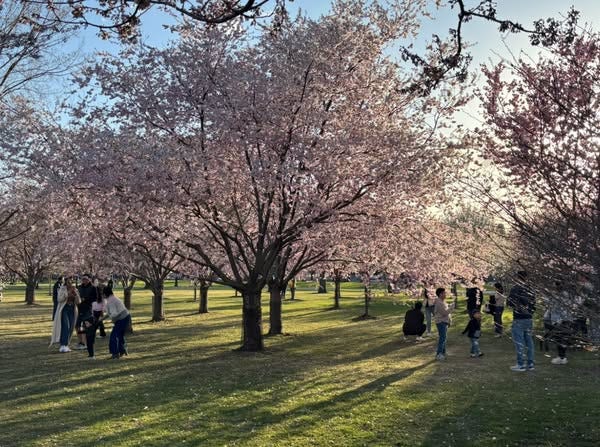
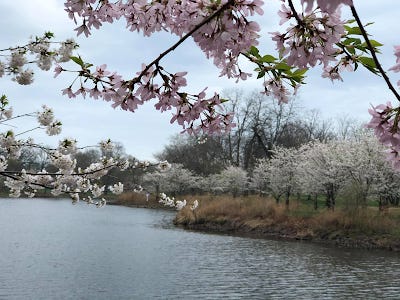
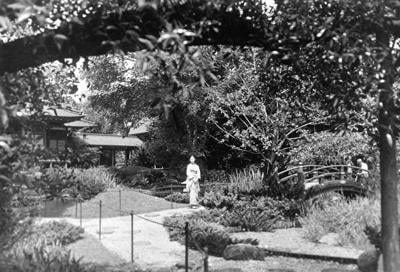
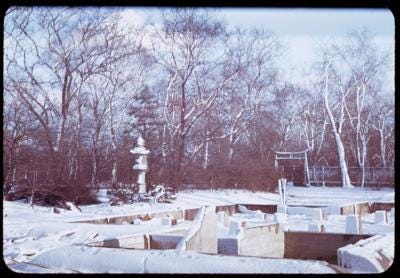

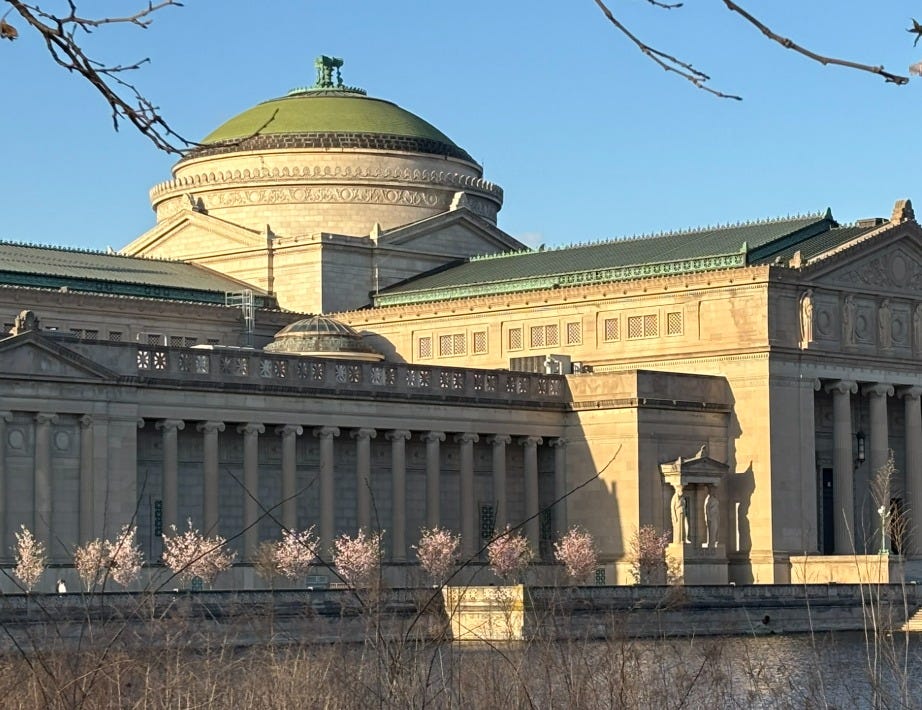

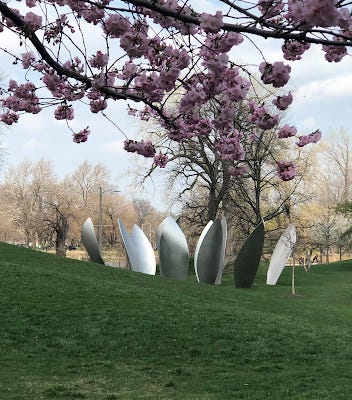
🩷
Your last picture shows a lantern from the original garden that burned. It and another were in the ruins when I was little. My family used to go visit the "garden", before it was rebuilt.